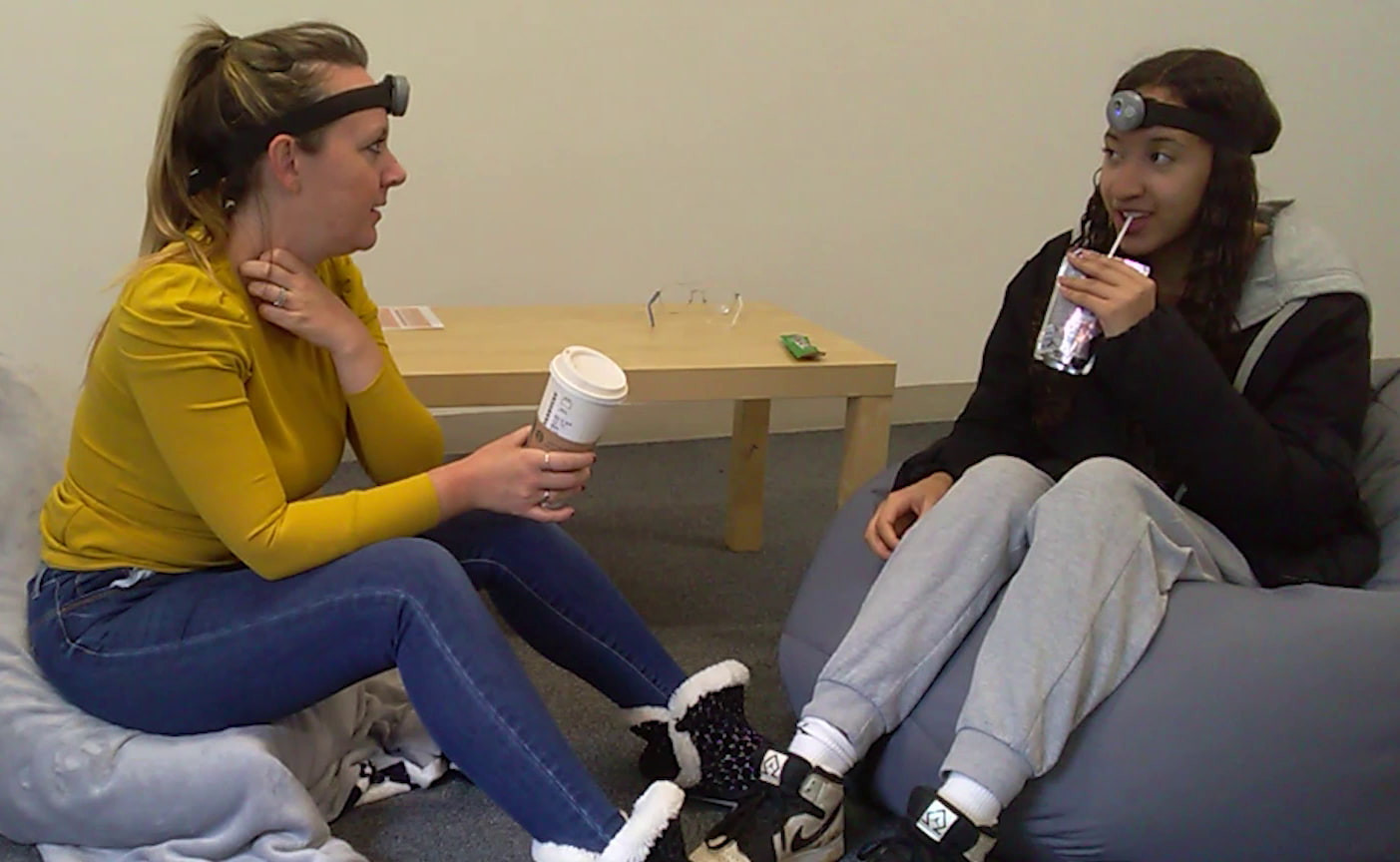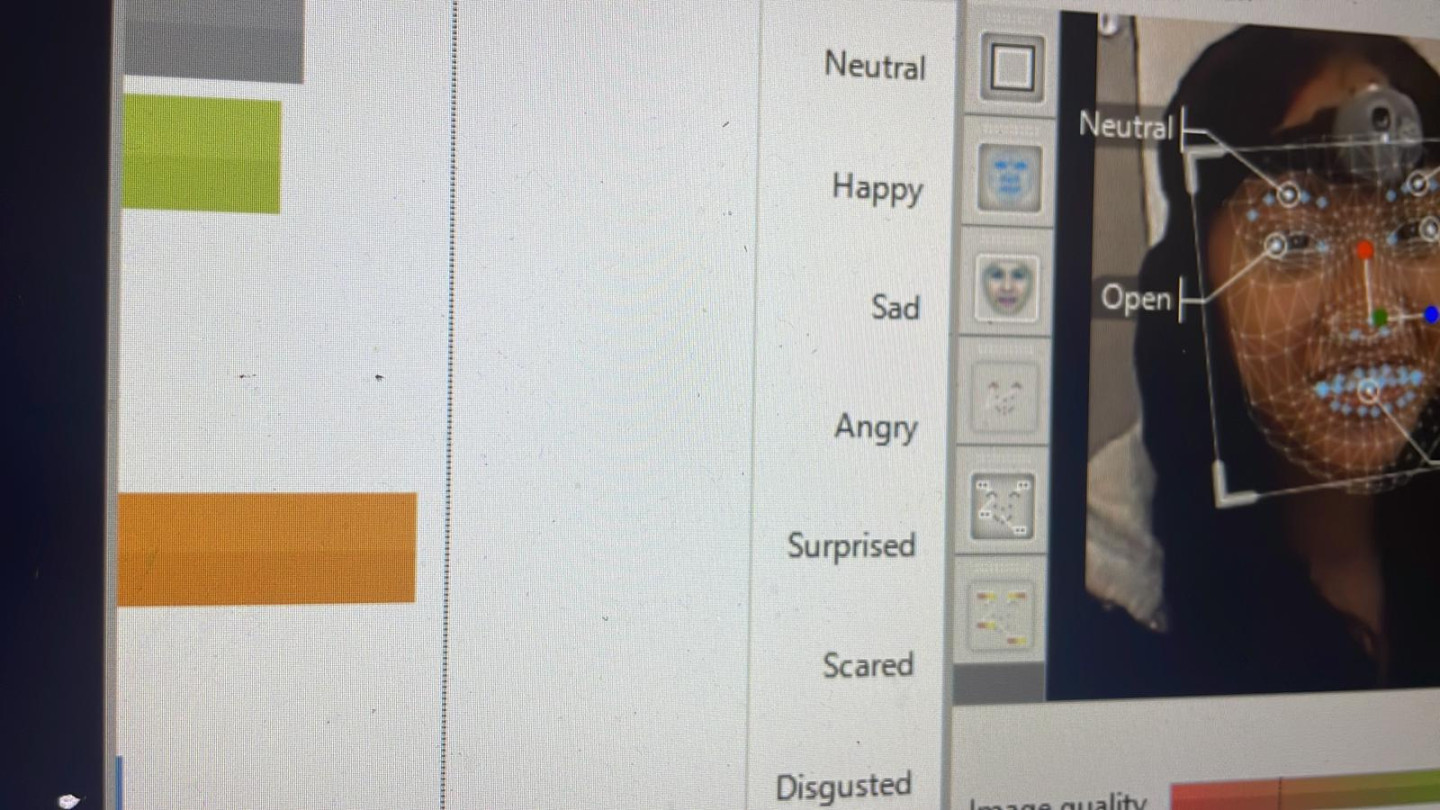Baffled by eye rolls? Confused by lip curls? Wearable cameras shed light on complex teen emotions

Psychologists are one step closer to solving the age-old, and possibly most challenging, puzzle for many parents - how to understand and communicate with a teenager.
From scowls to smirks, eyebrow raises to eye rolls, adolescents’ facial expressions have been recorded in wearable headcam footage and run through new AI software, enabling intricate details of emotions across minute time scales that remain hidden to the human eye to be detected and understood.
The work by Manchester Met and King’s College London is outlined in a paper published in the journal Frontiers, showing the technology is helping psychologists work with teens and their parents to foster better mutual understanding and communication.
It might even spot when teenagers are masking their true feelings, with the algorithms able to pinpoint that someone is 20% worried or 5% happy, for example. With the use of artificial intelligence, human judgements can be predicted based on the software’s readings – meaning computers can provide unique information on the timing and mixed presentation of emotions.
The protocols could soon be used in therapy sessions, ultimately helping to reduce mental health problems by promoting understanding and positive parent-adolescent interactions.
The study involved the Manchester Met team investigating how well computers could capture authentic human emotions in youths aged 14-16 and their parents during everyday interactions. They captured their expressions on footage recorded from headcams worn during card game sessions designed to elicit emotional responses.
The European Research Council (ERC) funded project involved work with 110 families who were members of the Wirral Child Health and Development Study, a longitudinal birth cohort based at the University of Liverpool.
The protocol for using the cams at home and process of ‘coding’ teen and parents’ emotions was co-designed in interactive workshops using theatre and immersive film and a mobile research van with young people and communities.
Dr Nicky Wright, Psychology Lecturer at Manchester Met and lead researcher, said: “With the current mental health crisis in adolescence it is crucial we understand potential sources of resilience for young people.
“Promoting strength-based, supportive and positive interactions between parents and young people is a key step. Our program of work brings together evidence from the existing scientific literature, co-production with young people and their families, and technological advances to identify subtle interactional patterns which have the potential to transform how we assess relationships in research and how we target relational interventions.”
Mental health is a rapidly growing issue for young people, with one in five young people identified as having a mental health problem in 2022, rising from 12% in 2017 to 20% in 2023.
The participants found that wearing the cams in a home scenario allowed them to behave more normally than if they were in a research lab or therapy setting. Teenagers who took part in the teen cam pilot said: “It’s in your own home and you feel more comfortable to act as you usually would”, as well as: “It is less embarrassing because it is easier to have a conversation without a third person listening in and taking notes.”
Parents who took part added: “It was just us which was more natural, it didn’t need any time to feel comfortable” and “I think you definitely behave more naturally at home with nobody watching…you’re not thinking about what the researcher is thinking.”
Dr Tom Jewell, Lecturer in Mental Health Nursing at King’s College London and senior author of the paper, said: “One of the most exciting things about this project is the potential to use headcam footage in family therapy sessions. For example, families could be asked to film themselves doing a task, either at home or in the session. The therapist could then review the task with the family, picking out positive moments in the interaction.”
Dr Wright added: “Human interaction is highly complex and multi-faceted. Our facial expressions serve as critical non-verbal social cues, communicating our emotions, intentions and support our social intentions. But a huge amount of individual variability exists in our expressions, much of which is outside our conscious control. Understanding how these variations are understood and responded to by parents may provide critical information to support relationships.”
Now the research team plan to explore the use of automated facial coding as a tool for families and those who support them to improve communication and relationships between parents and teenagers, and better understand mood and mental health disorders and interactions.
Read the full study, Through each other’s eyes: initial results and protocol for the co-design of an observational measure of adolescent-parent interaction using first-person perspective here.






